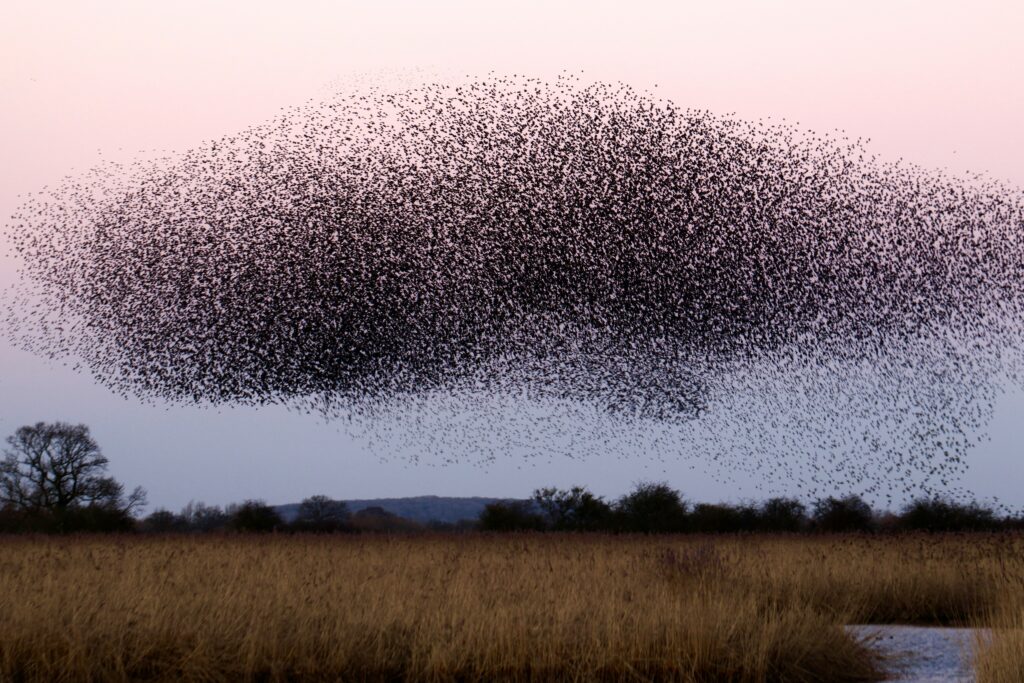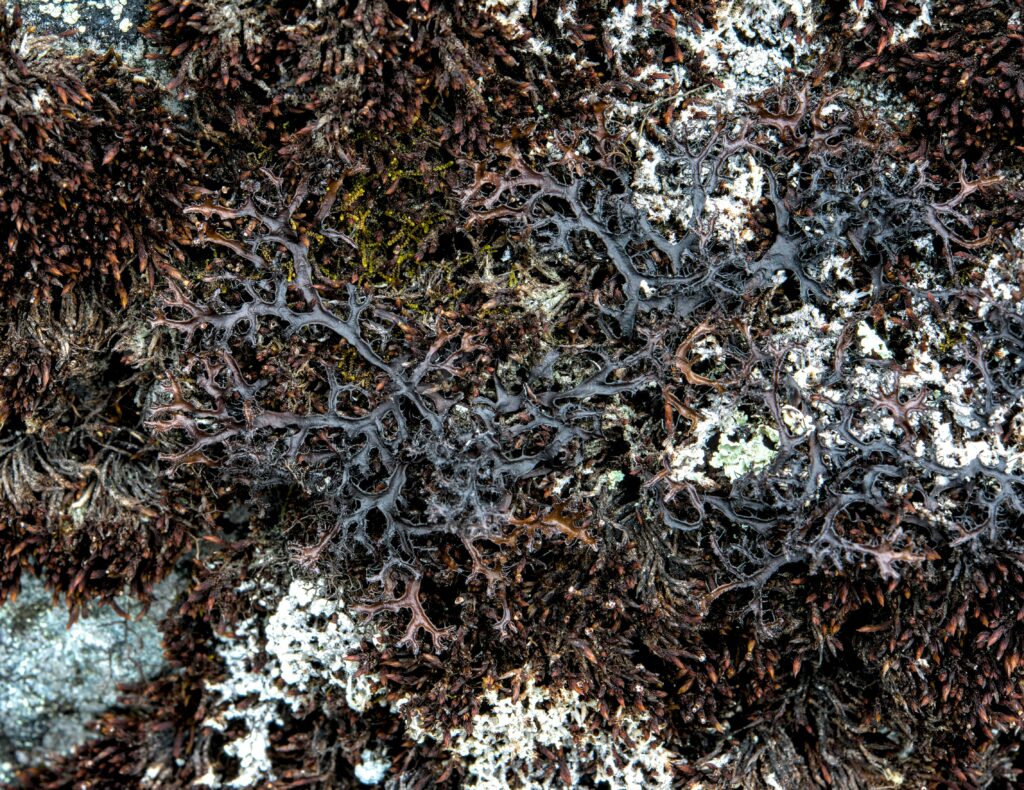
Image by katsuma tanaka
A Brief Introduction: When Democracy Meets the Wisdom of Nature
Ever wonder why a flock of starlings can perform aerial ballet with thousands of participants, while getting ten friends to agree on a restaurant feels impossible? Or why your smartphone can coordinate with cell towers across continents flawlessly, but our political systems seem to break down whenever we face complex challenges?
The secret isn’t that birds are smarter than humans (though some days, that’s debatable). It’s that natural systems have spent billions of years figuring out how to make collective decisions without descending into chaos. They’ve discovered principles that we’re only just beginning to understand—and that we desperately need to apply to human society.
This essay explores a simple but radical idea: what if we designed our democratic institutions to work more like the natural systems that actually succeed at coordination? What if we could create “computational democracy”—not rule by computers, but democracy enhanced by the same principles that make forests, brains, and immune systems so remarkably good at collective problem-solving?
If you’ve ever felt frustrated that our brightest minds can’t seem to coordinate solutions to obvious problems, or wondered why our institutions feel so clunky compared to the elegant systems we see in nature, this exploration is for you. We’ll journey from the physics of life itself to practical possibilities for transforming how we make decisions together, taking you along our dream of Computational Democracy.

Image by James Wainscoat
The Promise of Natural Coordination
Learning from Billions of Years of R&D
Think about the most frustrating meeting you’ve ever attended. Now imagine if that same group of people could coordinate as smoothly as the cells in your body coordinate to heal a wound, or as elegantly as a forest coordinates resource sharing between trees. The difference isn’t intelligence—it’s that natural systems have had billions of years to debug their coordination mechanisms.
Consider what your immune system accomplishes every day: millions of different cell types communicate, share information, make collective decisions about threats, allocate resources, and maintain the delicate balance that keeps you alive. They do this without a CEO, without voting, without getting stuck in endless committee meetings. They’ve mastered what we’re still struggling with—how to make good collective decisions quickly.
The key insight that’s emerging from complexity science research is that these natural systems succeed because they’ve evolved sophisticated ways to process information and maintain boundaries. Each system knows how to stay organized internally while remaining responsive to changes in its environment.
Why Human Coordination Keeps Breaking Down
Here’s the frustrating reality: the coordination problems that keep us up at night—climate change, inequality, political dysfunction—all follow the same basic pattern. Everyone has reasonable individual incentives, but when we all follow those incentives, we create collective disasters.
It’s like being stuck in traffic. You’re not moving, so you switch lanes, which makes sense for you individually. But when everyone does this, traffic gets worse for everyone. Scale this dynamic up to global challenges, and you get our current predicament.
Our current institutions—governments, markets, democracies—were designed for simpler times when communities were smaller and problems were more local. They’re like using a paper map to navigate a modern city. They sort of work, but they’re painfully inadequate for the complexity we’re actually facing.
Meanwhile, the natural systems around us handle far more complex coordination challenges every day. A forest coordinates resource sharing between thousands of species. Your brain coordinates activity between billions of neurons. These systems don’t just avoid disasters—they actively create resilience and intelligence through their coordination.
What We Could Build Instead
Now here’s where it gets exciting. What if we could design democratic institutions that actually worked like these successful natural systems? What if collective decision-making could be as smooth as the coordination you see in a murmuration of starlings?
This isn’t about replacing human judgment with computers. It’s about giving human collective intelligence the same kind of tools that make natural systems so effective. Just as GPS doesn’t replace your ability to navigate but makes it vastly more powerful, computational democracy could amplify our ability to think and decide together.
Picture this: instead of the current system where we argue past each other on social media and vote once every few years, we could have ongoing conversations where good ideas get refined and bad ideas get filtered out naturally. Instead of policies made by whoever shouts loudest, we could have decisions that genuinely integrate diverse perspectives and adapt based on real-world feedback.
The benefits would be tangible and immediate: faster responses to emerging challenges, policies that actually work because they’ve been tested and refined, institutions that get smarter over time instead of more dysfunctional. We could finally have democracy that feels as sophisticated as the technology in our pockets.

Image by Alexey Melechin
Building the Information Infrastructure for Collective Intelligence
How Nature Creates Intelligence Through Connection
Every successful coordination system in nature operates on the same basic principle: constant, meaningful communication between parts creates intelligence that exceeds what any individual part could achieve alone.
Your brain is the perfect example. Individual neurons are simple—they can only send basic electrical signals. But when billions of neurons communicate continuously, consciousness emerges. No single neuron understands language or recognizes faces, yet their collective conversation creates your ability to read these words and understand their meaning.
Forests work similarly through underground networks of fungal threads that connect tree roots. Trees share carbon, water, and even warning signals about insect attacks through these networks. What looks like individual trees competing is actually a collaborative network that makes the entire forest more resilient. When one tree is shaded and struggling, others can send it resources. When drought hits, the network helps distribute scarce water.
The immune system provides another model: millions of different cell types patrol your body, constantly sharing chemical messages about what they encounter. When they detect a threat, this distributed communication network rapidly coordinates a response. No central authority tells each cell what to do, yet they achieve remarkably sophisticated collective behavior.
The pattern is clear: intelligence emerges from connection, and connection requires continuous information flow.
The Power of Human Conversation
At the individual level, genuine conversation transforms both participants. When we truly listen to someone with a different perspective, we literally expand our capacity to understand the world. This isn’t just feel-good philosophy—cognitive science research shows that thinking extends beyond individual brains when we engage authentically with others.
Regular dialogue with neighbors creates something social scientists call “social capital”—networks of trust and mutual understanding that make communities more resilient and capable. But it goes deeper than that. Communities that engage in ongoing conversation about shared challenges develop collective intelligence that allows them to spot problems early, generate creative solutions, and adapt quickly to changing circumstances.
This mirrors how biological systems maintain health. Just as cells must constantly communicate to coordinate immune responses, communities need ongoing dialogue to coordinate responses to social challenges. One-off town halls or annual elections aren’t enough—we need the social equivalent of a nervous system.
When this works well, you can see it. Think of a neighborhood that successfully organizes to address a local problem, or a community that rallies together during a crisis. These groups didn’t just happen to be more organized—they had developed the conversational infrastructure that allowed collective intelligence to emerge when needed.
Scaling Wisdom: From Dialogue to Democracy
Here’s where computational tools become essential. The principles that work for small groups—continuous dialogue, information sharing, collective sense-making—can’t scale to complex societies through human conversation alone. We need technology to amplify human wisdom without replacing human judgment.
Imagine democratic processes that work more like healthy biological systems: continuous rather than episodic, adaptive rather than rigid, learning rather than repeating. Citizens could engage in ongoing dialogue about shared challenges, with AI systems helping to synthesize diverse perspectives, surface emerging patterns, and coordinate collective responses.
These systems could embody the same error-correction mechanisms that make natural systems robust. Misinformation would be filtered out through distributed fact-checking, while good ideas would spread and improve through collaborative refinement. The result would be institutions capable of genuine learning—able to update their approaches based on evidence rather than ideology.
This isn’t science fiction. Projects around the world are already demonstrating how computational tools can enhance rather than replace human collective intelligence. Digital platforms are helping communities engage in more sophisticated dialogue, AI systems are helping synthesize large-scale input into policy recommendations, and new forms of online democracy are allowing broader participation in complex decisions.
The path forward requires combining the best of human wisdom—our creativity, empathy, and moral reasoning—with the best of computational power—the ability to process vast amounts of information, identify patterns, and coordinate complex systems. This is how we build democracy that’s finally as sophisticated as the challenges we face.
People Know How.
On a mission to contribute in conceiving this missing infrastructure.
